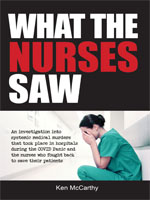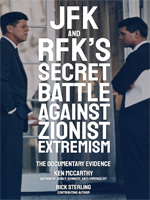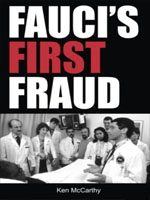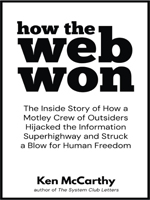Media ignored 9/11 calm amid chaos
The story you were never told
Original video produced by BrasscheckTV.com and narrated by Goodman Green
Click here to support Brasscheck
Script by Andrew Greeley
Reprinted by special permission
On Sept. 11 last year, up to 1 million people were evacuated from Lower Manhattan by water “in an emergent network of private and publicly owned watercraft–a previously unplanned activity.” It was an American Dunkirk, the epic rescue of the British army at Dunkirk in 1940 by an armada of a similar craft.
Yet you most likely never saw this astonishing event, reported last month by Professor Kathleen Tierney at the annual meeting of the American Sociological Association, on television and never read about it in the print media. It would have made for spectacular TV imagery; yet, as an example of calm and sensible and spontaneous action, it did not fit the media image of panic, an image that will doubtless be re-enacted next week.
Tierney, director of the Disaster Research Center at the University of Delaware, argued that the reaction of people at the World Trade Center was what one might have expected from the research literature of the last 50 years on behavior in disaster situations. ”Social bonds remained intact and the sense of responsibility to others–family members, friends, fellow workers, neighbors, and even total strangers remains strong. . . . People sought information from one another, made inquiries and spoke with loved ones via cell phones, engaged in collective decision-making, and helped one another to safety. When the towers were evacuated, the evacuation was carried out in a calm and orderly manner.”
There is growing research literature that Tierney cites that leaves little doubt about this description. (See also Lee Clarke’s article in the current issue of the new sociological journal Contexts.) Many will not believe that the scenario could possibly be true. Doesn’t everyone know that there is panic in disaster situations? Don’t people become frightened, selfish, and flee in headlong panic?
The answer is no, they don’t. The proof that this was not true on Sept. 11 is to be found in the fact that 90 percent of the people in the World Trade Center escaped–which would have been impossible had people panicked. Most people are cool under such pressure. Their old social networks do not dissolve, and new social networks emerge. The paradigm of humankind as a mob simply isn’t true. We are social animals, and even when terribly frightened we remain social animals.
Note that most of the positive social behavior that saved so many lives was not organized by any formal agency, much less by any command-and-control mechanism. People saved themselves. Other people converged from all over the city to help. As Tierney says, “The response to the Sept. 11 tragedy was so effective precisely because it was not centrally directed and controlled. Instead, it was flexible, adaptive, and focused on handling problems as they emerged.”
In some sense, Sept. 11 was a victory over the terrorists. Socially responsible free Americans prevented the loss from being much worse. Yet, the response of the planning agencies has been to establish more and more elaborate command-and-control structures, which will force a population that is not about to panic into panic behavior.
Says Tierney: “When Sept. 11 demonstrated the enormous resilience in our civil society, why is disaster response now being characterized in militaristic terms?” Perhaps because those who are determined to control everything don’t understand that even in military situations, it’s the second lieutenants and the sergeants who win battles, as, for example, in the Omaha Beach chaos at Normandy.
Generals sitting in faraway bunkers cannot control battles. Neither can bureaucrats be far from the scene of the tragedy, no matter how elaborate their plans are.
The media got the story all wrong because the panic paradigm is still pervasive and because no one in the media had read the disaster research literature. They thus reinforced the propensity of those running the country not to trust the good sense and social concern of ordinary folk. Rather, they want to control everything with such ditsy ideas as the proposed Homeland Security Department. That plan would take union and civil service protections away from government workers and accomplish little else.
You can count on it: In the orgy of self-pity in which the media will engage next week, no one will pay any attention to why there was no panic in the evacuation, much less to the American Dunkirk at the lower end of Manhattan. Nor will anyone argue that the only kind of formal plan that will work in similar situations is one that is sensitive to and ready to integrate with the powerful social propensity of the human species.







